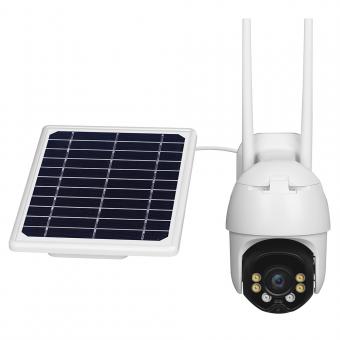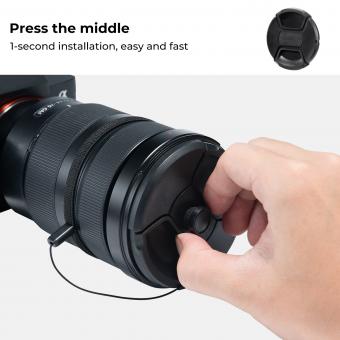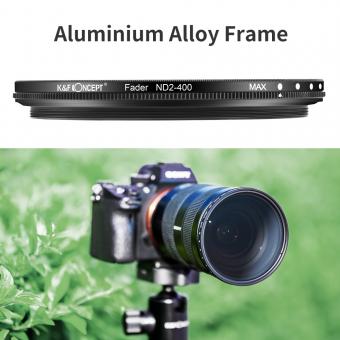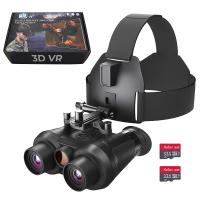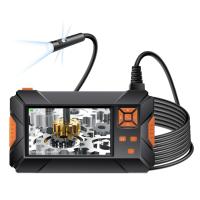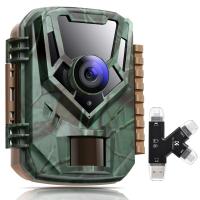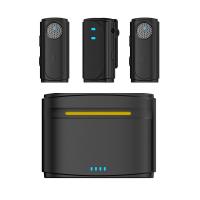Your Cctv Is Vulnerable And Can Be Exposed ?
CCTV systems can be vulnerable to various security risks and potential exposure. Factors such as weak passwords, outdated firmware, lack of encryption, or improper network configuration can contribute to these vulnerabilities. Additionally, unauthorized access, hacking attempts, or physical tampering can also compromise the security of CCTV systems. It is crucial to implement robust security measures, such as using strong passwords, regularly updating firmware, enabling encryption, and restricting access to the system. Conducting regular security audits and monitoring for any suspicious activities can help mitigate the risks associated with CCTV system vulnerabilities.
1、 Security vulnerabilities in CCTV systems
Security vulnerabilities in CCTV systems have become a growing concern in recent years. With the increasing use of surveillance cameras for both personal and commercial purposes, it is crucial to address the potential risks associated with these systems. One of the main concerns is that your CCTV is vulnerable and can be exposed to unauthorized access.
One of the primary vulnerabilities lies in the software and firmware used in CCTV systems. Outdated or poorly designed software can leave the system susceptible to hacking and unauthorized access. Hackers can exploit these vulnerabilities to gain control over the cameras, manipulate footage, or even disable the entire system. Additionally, default passwords and weak authentication mechanisms are often used, making it easier for attackers to gain access.
Another vulnerability is the lack of encryption in CCTV systems. Without proper encryption, the video footage transmitted from the cameras to the recording devices or monitoring stations can be intercepted and viewed by unauthorized individuals. This not only compromises the privacy of individuals being monitored but also poses a risk to the overall security of the premises.
Furthermore, the increasing integration of CCTV systems with the internet and network infrastructure introduces additional vulnerabilities. If not properly secured, these systems can be accessed remotely, allowing attackers to exploit weaknesses in the network and gain unauthorized access to the cameras.
To mitigate these vulnerabilities, it is essential to regularly update the software and firmware of CCTV systems to ensure they are equipped with the latest security patches. Strong authentication mechanisms, such as multi-factor authentication, should be implemented to prevent unauthorized access. Encryption should also be used to protect the transmission of video footage.
In conclusion, it is crucial to be aware that your CCTV system is vulnerable and can be exposed to security risks. By addressing these vulnerabilities and implementing appropriate security measures, the risk of unauthorized access and exploitation can be significantly reduced.
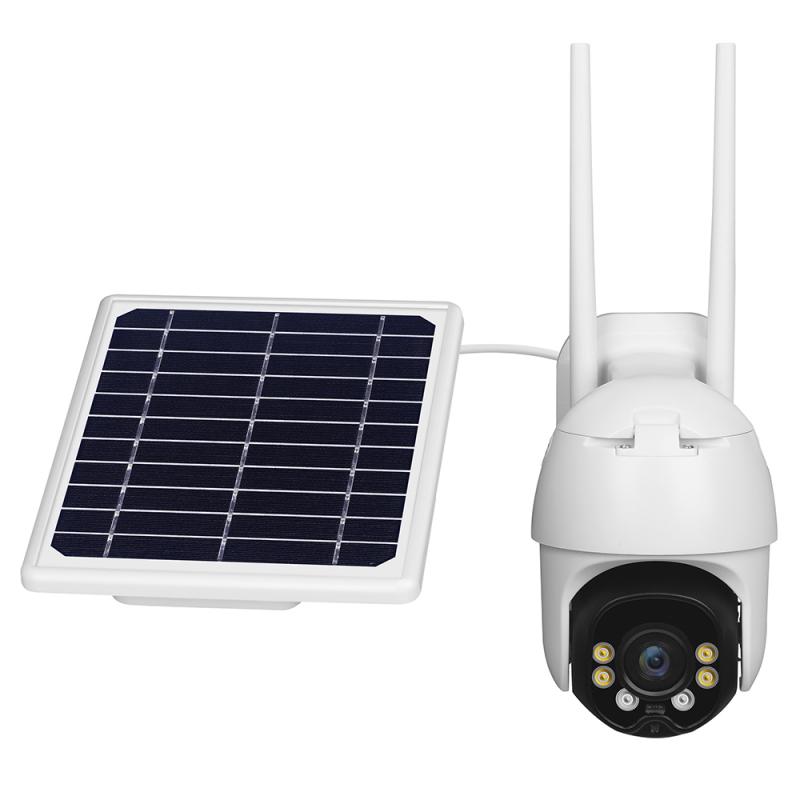
2、 Risks of CCTV exposure and privacy breaches
Risks of CCTV exposure and privacy breaches have become increasingly prevalent in today's digital age. While closed-circuit television (CCTV) systems are commonly used for security purposes, it is crucial to acknowledge that these systems can also be vulnerable to exploitation and exposure.
One of the primary concerns regarding CCTV systems is the potential for unauthorized access. Hackers and cybercriminals are constantly evolving their techniques to exploit vulnerabilities in security systems, and CCTV systems are no exception. If not properly secured, these systems can be accessed remotely, allowing unauthorized individuals to view live feeds or even gain control over the cameras. This can lead to serious privacy breaches, as sensitive information and activities may be exposed to malicious actors.
Furthermore, the proliferation of internet-connected devices has increased the risk of CCTV exposure. Many modern CCTV systems are integrated with network connectivity, allowing users to access live feeds remotely. However, this connectivity also opens up avenues for potential breaches. Weak passwords, outdated firmware, or unpatched software can make these systems susceptible to hacking attempts.
Additionally, the rise of facial recognition technology has raised concerns about the potential misuse of CCTV systems. Facial recognition algorithms can be used to identify individuals in real-time, raising questions about privacy and surveillance. There have been instances where CCTV footage has been used to track individuals without their consent or knowledge, leading to concerns about the erosion of personal privacy.
To mitigate these risks, it is essential to implement robust security measures for CCTV systems. This includes regularly updating firmware and software, using strong passwords, and ensuring that the system is protected by firewalls and encryption. Regular security audits and vulnerability assessments can also help identify and address any weaknesses in the system.
In conclusion, while CCTV systems serve an important purpose in enhancing security, it is crucial to recognize the risks associated with their exposure and potential privacy breaches. By implementing stringent security measures and staying vigilant against evolving threats, individuals and organizations can better protect themselves from unauthorized access and maintain the privacy of those being monitored.
3、 Cybersecurity threats to CCTV networks
Cybersecurity threats to CCTV networks have become a growing concern in recent years. With the increasing use of internet-connected cameras, the vulnerability of CCTV systems has become more apparent. These systems are often targeted by hackers who exploit security weaknesses to gain unauthorized access or control over the cameras.
One of the main reasons why CCTV networks are vulnerable is the lack of proper security measures. Many cameras are installed with default usernames and passwords, which are easily guessable or widely known. This makes it easier for hackers to gain access to the cameras and manipulate them for their own purposes. Additionally, outdated firmware and software in these systems can also leave them susceptible to attacks.
Another significant threat to CCTV networks is the possibility of unauthorized access to the video feeds. Hackers can intercept the video streams and use them for malicious purposes, such as spying on individuals or planning criminal activities. This not only compromises the privacy and security of individuals but also poses a risk to public safety.
Furthermore, the increasing use of cloud-based storage for CCTV footage introduces additional vulnerabilities. If the cloud storage provider's security measures are not robust, hackers can potentially gain access to the stored video footage, compromising the integrity of the evidence and potentially exposing sensitive information.
To mitigate these threats, it is crucial to implement strong security measures for CCTV networks. This includes regularly updating firmware and software, using strong and unique passwords, and enabling encryption for video streams. Additionally, network segmentation and access control measures can help limit the exposure of CCTV systems to potential attacks.
In conclusion, the vulnerability of CCTV networks to cybersecurity threats is a significant concern. It is essential for individuals and organizations to be aware of these risks and take appropriate measures to secure their systems. Failure to do so can result in unauthorized access, privacy breaches, and potential misuse of video footage.
4、 Protecting CCTV systems from unauthorized access
Protecting CCTV systems from unauthorized access is crucial in today's digital age where cyber threats are becoming increasingly sophisticated. It is essential to ensure that your CCTV system is secure to prevent any potential breaches that could compromise the privacy and security of your premises.
One of the latest points of view in securing CCTV systems is the recognition that these systems themselves can be vulnerable and exposed to unauthorized access. With the advancement of technology, hackers can exploit vulnerabilities in CCTV systems, gaining unauthorized access to live feeds, recorded footage, and even control over the cameras themselves. This can lead to serious consequences, such as invasion of privacy, theft of sensitive information, or even sabotage of the entire surveillance network.
To protect your CCTV system from such vulnerabilities, it is important to implement robust security measures. Firstly, ensure that your CCTV system is equipped with the latest firmware and software updates. Manufacturers often release updates to address security vulnerabilities, so regularly checking for and installing these updates is crucial.
Additionally, it is essential to change default passwords and use strong, unique passwords for all devices connected to the CCTV system. Weak or default passwords are easy targets for hackers, so using complex combinations of letters, numbers, and symbols is recommended.
Furthermore, segmenting your CCTV system from the rest of your network can help minimize the potential impact of a breach. By isolating the CCTV system, even if one part is compromised, the rest of your network remains secure.
Regularly monitoring and auditing your CCTV system is also important. This includes reviewing access logs, checking for any suspicious activities, and promptly addressing any identified vulnerabilities or breaches.
Lastly, consider implementing additional security measures such as two-factor authentication, encryption of data, and intrusion detection systems. These measures can provide an extra layer of protection against unauthorized access.
In conclusion, while it is true that CCTV systems can be vulnerable and exposed to unauthorized access, there are various steps that can be taken to protect them. By staying vigilant, keeping systems up to date, using strong passwords, segmenting networks, and implementing additional security measures, you can significantly reduce the risk of unauthorized access to your CCTV system and ensure the privacy and security of your premises.

